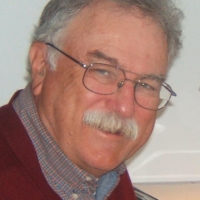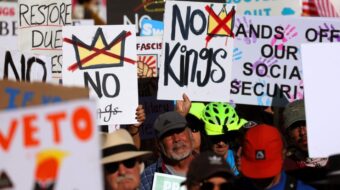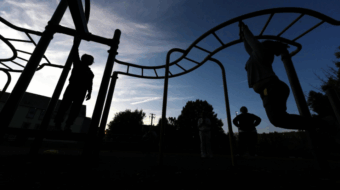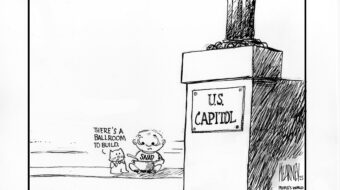
WASHINGTON — Suddenly, the Watergate conspiracy is back in the headlines with the revelation that former FBI officer W. Mark Felt is the mysterious “Deep Throat” who fed Washington Post reporter Bob Woodward tips on the plot that gripped the nation in 1973-74.
From the day the break-in of the Democratic Party’s Watergate headquarters occurred, June 17, 1972, there has been a concerted effort to hide the real meaning of the conspiracy. Nominally, it was a bungled attempt to plant listening devices and rifle the files of the opposition party to insure President Richard Nixon’s re-election in November of that year.
Plot to destroy democracy
In truth, it was the tip of the iceberg of a multifaceted plot to destroy democracy and impose a police state in the U.S. It had its origins in the FBI’s COINTELPRO spy and dirty tricks operation, initially aimed at the Communist Party USA but later expanded to encompass the Rev. Martin Luther King Jr. and thousands of other fighters for equality and world peace.
There was the CIA’s “Operation Chaos” aimed at sowing mayhem in the civil rights movement and the antiwar movement. There was the Pentagon’s CONUS Intelligence based at Fort Holabird, just outside Baltimore. Starting in 1969, U.S. Army intelligence established a computerized data-bank on millions of people, all engaged in constitutionally protected protest activities. The Pentagon assigned 1,500 agents to spy on peace groups, to infiltrate their meetings, and to instigate violence that could be used to confuse, discredit and isolate the antiwar movement.
I was there
I covered these stories as Washington correspondent for the Daily World. When the Senate Watergate Committee convened, I was assigned a coveted seat in the Senate Caucus Room for the hearings chaired by Sen. Sam Ervin (D-N.C.).
I remember clearly the advice given me by my DW editors Carl Winter, John Pittman and Si Gerson. Avoid the “Who shot John” whodunit details of the Watergate conspiracy, they said. Focus on the underlying political meaning of the conspiracy, its fascist-like essence. My front-page story in the May 18, 1973, edition was headlined, “Probe Stresses Peril to U.S. Constitution.” Ervin opened the hearings with these words: “The burglars who broke into the Democratic Party’s Watergate headquarters, June 17, 1972, were seeking to steal not the jewels, money, or other property of American citizens but something far more valuable – their most precious heritage, the right to vote in a free election …. Those making this plan had the same mentality employed by the Gestapo in Nazi Germany.”
I sat beside Washington Star correspondent Mary McGrory, a Pulitzer Prize winner, who muttered under her breath her profound loathing of Nixon and everything he stood for. She took shorthand. During breaks, reporters would crowd around McGrory to make sure they had word-for-word the incriminating testimony of the infamous “White House plumbers” and their accomplices.
Hacks, thugs and goons
A procession of Nixon hacks, thugs and goons paraded through the ornate chamber. New York Red Squad cop Tony Ulasewicz, Nixon’s bagman, told of handing out hush money from a $300,000 secret slush fund to buy off the burglars and all others with information that linked Nixon to the conspiracy.
Nixon’s counsel, John Dean, laid bare his orchestration, under Nixon’s direct command, of a far-reaching cover-up after the burglars were arrested.
Try as they might, Republican senators like Howard Baker (Tenn.) and Edward Gurney (Fla.) could not trip up the unflappable Dean.
There was Maurice Stans, Nixon’s former commerce secretary who served as treasurer of the Committee to Reelect the President (CREEP). It played the main role in assuring Nixon’s infamous “landslide” re-election. Stans calmly told of the shopping bags stuffed with corporate cash that flowed into Republican coffers to buy (or steal) the 1972 presidential election. Some of the cash in crisp $100 bills was found in the pockets of the five Watergate burglars when they were arrested. Four of the five were Cuban emigres, veterans of the CIA’s Bay of Pigs invasion. (How quaint CREEP’s fundraising methods seem compared to the hundreds of millions in corporate cash that bankroll the Republican machine today!)
Nixon’s police state plan
The longer the Watergate hearings proceeded, the more we learned of Nixon’s long-standing, secret efforts to impose a police state in the United States. Tom C. Huston, national chairman of Young Americans For Freedom, later a U.S. Army Intelligence officer, had been recruited by Nixon’s Chief of Staff H.R. Haldeman to draft what later became known as the “Huston Plan.”
It was a scheme to merge the intelligence agencies into a Gestapo-like secret police under presidential command. Its task would be to engage in political espionage, mail surveillance, breaking and entering, illegal wiretapping, infiltration, dirty tricks and provocations.
The Watergate hearings proved that the Huston Plan was not merely a Nixon “wish-list.” There was, of course, Nixon’s “enemies list” of 30,000 or more progressive people targeted for repression. CREEP implemented many of the tactics outlined in the Huston Plan. Donald Segretti was the director of CREEP’s dirty tricksters assigned to infiltrate and sow chaos in the ranks of Nixon’s Democratic rivals. He told the hearings that his crew forged a letter on Maine Sen. Ed Muskie’s stationery accusing rivals Hubert Humphrey and Henry Jackson of sexual “offenses,” including homosexuality.
The tricksters sent another forged letter to the ultra-right Manchester Union Leader in New Hampshire falsely reporting that Muskie had used the chauvinistic epithet “Canuck” to describe the many French Canadians in Maine and New Hampshire. They also planted a story in the Union Leader that Muskie’s wife had told “dirty stories” on the campaign trail. At a news conference outside the editorial offices of the Union Leader to rebut these lies, Muskie burst into tears. It was the end of his presidential bid.
Presidential maneuvers, forced retreats
There was a surreal atmosphere in the capital as Nixon maneuvered desperately to avoid impeachment. One of his ploys was to pose as world statesman, too busy with shuttle diplomacy to be bothered with what his press secretary, Ron Zeigler, called a “third rate burglary.”
A month after the Watergate hearings opened, I found myself on the White House press plane trailing Air Force One to the Western White House in San Clemente, Calif. There I covered Nixon’s summit with Soviet Leader Leonid Brezhnev.
What I remember most about that trip was actor Chuck Connor, star of “The Rifleman,” greeting Brezhnev when he stepped off the helicopter near Nixon’s compound. Connor, a giant, lifted Brezhnev from the tarmac in a big bear hug and then presented the Soviet leader with a matching pair of Colt 45s. Brezhnev’s face lit up with joy.
It symbolized mankind’s hopes for an end to the nuclear arms race. We gave front-page coverage to all the strategic arms negotiations in Moscow, Vienna and Washington even as outrage mounted against Nixon’s escalation of the war in Vietnam and the Watergate scandal. We viewed Nixon’s signature on the SALT and ABM treaties as a “forced retreat.”
‘Saturday Night Massacre’
Within hours of filing my stories from San Clemente, I was back covering Watergate. The White House tapes, with the notorious “18-and-a-half-minute gap,” were exposed. Nixon’s attempts to suppress them were rejected by Judge John Sirica and the U.S. Supreme Court.
The nation recoiled in outrage over the “Saturday Night Massacre,” Oct. 20, 1973, when Justice Department official Robert Bork fired Watergate Special Prosecutor Archibald Cox after Attorney General Elliot Richardson and his deputy were forced out for refusing to do so.
Within hours, 430,000 angry telegrams hit lawmakers’ offices. The people saw Cox’s firing as nothing less than a coup d’etat. The House Judiciary Committee began drafting articles of impeachment. His presidency in a state of collapse, Nixon resigned rather than go through impeachment.
Nixon gone, new ultra-right emerges
Nixon was gone, but the conspiracy did not end. Many of the same tactics once again surfaced 10 years later with the exposure of President Ronald Reagan’s Iran-Contra conspiracy.
Once again, hearings were convened in the Senate Caucus Room, this time before a joint Senate-House committee. I had a ringside seat as the strutting Lt. Col. Oliver North in his dress Marine uniform bragged about his criminal enterprise under Reagan’s command. He boasted of orchestrating the covert delivery of shiploads of Pentagon missiles to Iran, laundering the profits through numbered Swiss bank accounts to pay for weapons for the CIA’s secret wars in Central America. This operation circumvented a congressional ban on arms for the Contras.
Tens of thousands of innocent Nicaraguans and Salvadorans died in the Contra war. As for Reagan arming Iran, he was also arming Saddam Hussein for the fratricidal war in which perhaps a million Iraqis and Iranians died.
Rep. Jack Brooks (D-Texas) asked North about a White House plan to declare martial law, round up 400,000 immigrants and imprison them in concentration camps in the event of a U.S. invasion of Central America. The plan, codenamed Rex Alpha 84, also called for canceling the 1984 elections — a coup d’etat. Sen. Daniel Inouye (D-Hawaii), chair of the joint House-Senate hearings, interrupted Brooks. “I want to remind you that we agreed not to get into that subject,” Inouye said.
Donald Segretti died in Arlington, Va., a few years ago, run over by a car, mysteriously. But the Bush-Cheney campaign kept his sordid legacy alive.
Election 2000: ‘a very American coup’
During the “Count Every Vote” struggle in Florida in the stolen 2000 election, House Majority Leader Tom DeLay (R-Texas) recruited thugs who invaded the Board of Elections in Broward County, banging on doors and shouting for the workers inside to stop the vote count.
The vote count was stopped and later a sharply divided Supreme Court handed the election to Bush. I was in Florida that autumn covering what the People’s Weekly World branded “a very American coup.”
It was an operation taken straight out of Segretti’s book of dirty tricks.
Iraq: Bush’s Watergate?
Rep. John Conyers Jr. (D-Mich.) served on the Impeachment Committee in 1974, drafting the article indicting President Richard Nixon for war crimes in unleashing an illegal, unconstitutional war on Vietnam.
Thirty-one years later, Conyers convened a Capitol Hill hearing on the so-called “Downing Street Memo.” The document contains minutes of a July 23, 2002, meeting of top British officials, including Prime Minister Tony Blair. It reveals that George W. Bush had decided to go to war in 2002 and intelligence was being “fixed” to justify that decision.
Witnesses described the memo as a “smoking gun” proving that Bush tricked the nation with lies into an illegal and unconstitutional war, an impeachable offense.
Later that afternoon, Conyers led a delegation of his colleagues to the White House to deliver petitions signed by 560,000 people demanding that Bush answer the allegations of the Downing Street memo. Again this reporter was there. “Let Conyers in! Let Conyers in!” antiwar demonstrators chanted as White House guards blocked Conyers’ way. Finally, the guards opened the gate so the petitions could be passed through.
At a rally across the street, an exultant Conyers hailed the rising antiwar protests. “Keep it coming. We need a million signatures, 5 million, 20 million,” he said.
The people are rising once more against the specter of Watergate, determined to stop an illegal war, stop Bush from shredding the Constitution, to stop another coup before it happens.










